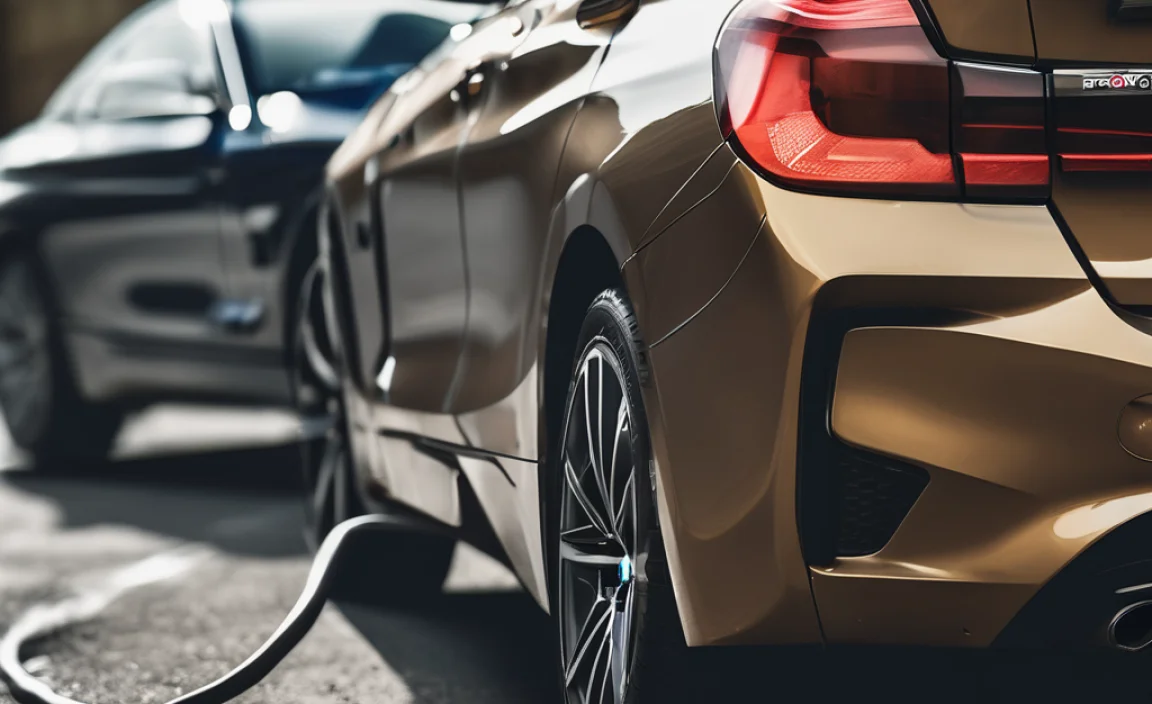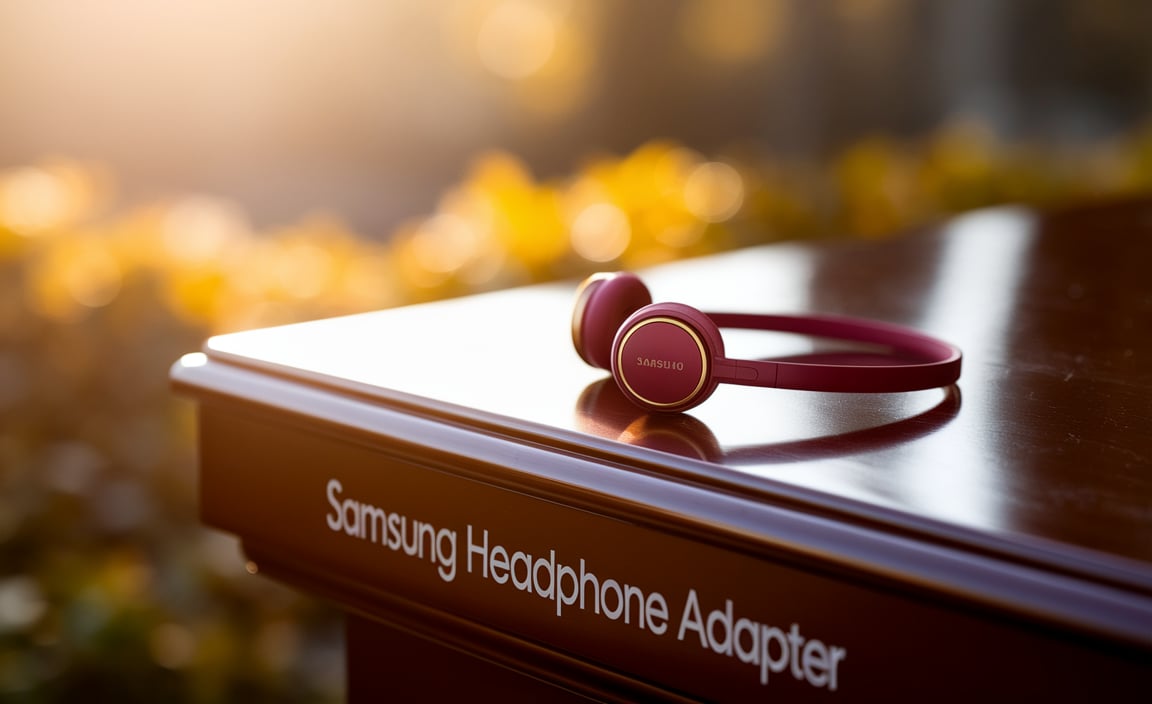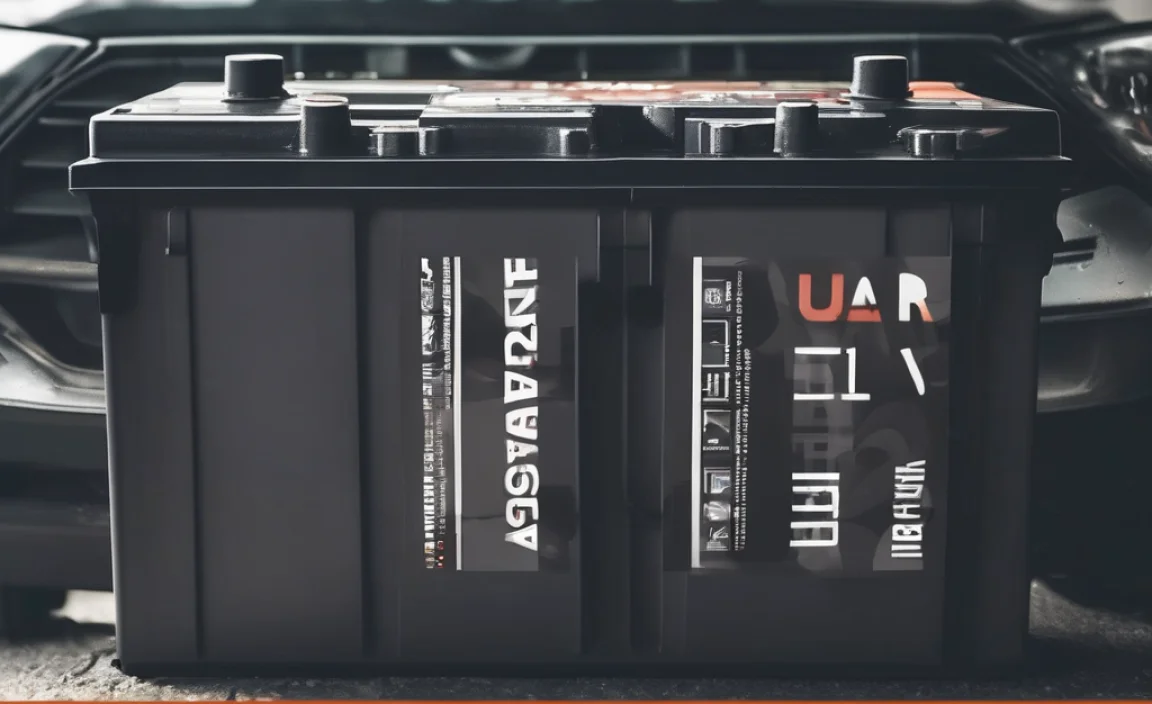Yes, you can connect your Android phone to a TV or monitor using a USB to HDMI adapter, making it easy to share photos, videos, and apps on a bigger screen. It’s a simple process that unlocks a whole new way to enjoy your mobile content. This guide will show you exactly how to do it.
Ever wished you could share that hilarious video with everyone in the room, or maybe present those amazing vacation photos without huddling around your phone? It’s a common wish! Trying to show off something on your small phone can be a bit of a squeeze, and frankly, not much fun for anyone else. The good news is, you don’t need to be a tech whiz to do it. You can easily connect your Android phone to your TV or an external monitor. This transforms your phone into a powerful media hub. We’re going to walk through how to use a simple USB to HDMI adapter, making big-screen viewing a breeze. Let’s get your phone displaying on that TV!
Why Mirror Your Android to a Bigger Screen?
Think of your Android phone as a mini-computer. It holds your memories, your entertainment, and sometimes even your work presentations. But that small screen has its limits. Connecting it to a larger display, like a TV or computer monitor, offers a host of benefits that can really enhance your experience:
Sharing Memories: Pictures and videos are meant to be enjoyed by many. Showing them on a big screen makes it a shared experience, perfect for family gatherings or showing off your latest adventures.
Enhanced Entertainment: Streaming movies, watching sports, or playing mobile games feels much more immersive on a large TV. The colors pop, the action is clearer, and you won’t miss a detail.
Productivity Boost: Need to show a document, a spreadsheet, or a presentation? Mirroring your screen can be a lifesaver for quick, impromptu meetings or for reviewing work.
Gaming Fun: Mobile games can really come alive on a big screen, especially if you can connect a controller. It’s the next best thing to a dedicated gaming console for some titles.
Simpler Navigation: For tasks requiring more precision, like typing out a long email or browsing the web, a larger display is far more user-friendly.
Understanding Your Android’s Display Output Capabilities
Before you rush out and buy an adapter, it’s important to know that not all Android phones can output video through their USB port. This feature is often called “DisplayPort Alternate Mode” or sometimes “MHL” (Mobile High-Definition Link), though MHL is becoming less common.
The USB-C port on many modern Android phones is versatile. It handles charging, data transfer, and can often send out video and audio signals. However, this capability isn’t universal.
How to Check If Your Phone Supports Video Output:
1. Consult Your Phone’s Manual or Manufacturer Website: This is the most reliable way. Look for terms like “DisplayPort Alternate Mode,” “MHL,” “Video Output,” or “Screen Mirroring via USB.”
2. Check Online Specifications: Search for your specific phone model and “specs” or “specifications.” Reputable tech sites will list these details.
3. Look for USB-C Alt Mode Compatibility: If your phone has a USB-C port, search for “[Your Phone Model] USB-C Alt Mode compatibility.”
4. Test with an Adapter: If you can borrow one safely, you can try connecting it. If it works, great! If not, your phone likely doesn’t support it.
_Roy’s Tip_: Most flagship phones from major brands like Samsung, Google Pixel, and OnePlus released in the last few years likely support it if they have a USB-C port. However, always double-check!
What is a USB to HDMI Adapter?
Think of an adapter as a translator. Your Android phone speaks one language (digital data through USB-C), and your TV or monitor understands another (HDMI). A USB to HDMI adapter is a small gizmo that translates that signal so your TV can understand and display what’s on your phone.
These adapters come in a few forms:
Simple Dongles: These are small, often rectangular or puck-shaped devices with a USB-C connector on one end (to plug into your phone) and an HDMI port on the other.
Hubs/Docks: More versatile than simple dongles, these might have an HDMI port, plus other ports like USB-A (for keyboards or mice), Ethernet, or SD card readers. This is great if you want to do more than just display your screen.
Key Components to Look For:
USB Connector Type: Ensure it matches your phone’s port. Most modern phones use USB-C. Older phones might use Micro-USB, but video output via Micro-USB (usually MHL) is rare now and requires specific MHL-certified adapters and cables. For this guide, we’ll focus on USB-C.
HDMI Version: Most adapters support HDMI 1.4 or 2.0. For standard HD (1080p) and even 4K at 30Hz, HDMI 1.4 is usually fine. For smoother 4K at 60Hz, look for HDMI 2.0.
Resolution Support: Make sure the adapter supports the resolution you want to display (e.g., 1080p, 4K). The quality of your phone’s output and your TV’s capabilities also play a role.
Power Delivery (Optional but Recommended): Some adapters have an extra USB-C port. This allows you to plug in your phone’s charger while the adapter is connected, so your phone doesn’t run out of battery while it’s displaying your screen. This is super handy for longer viewing sessions.
Some adapters might require drivers or specific app installations, but most modern ones are plug-and-play, especially if your phone natively supports DisplayPort Alt Mode.
How to Connect Your Android Phone to a TV via USB to HDMI: A Step-by-Step Guide
This is the fun part! Let’s get everything hooked up.
What You’ll Need:
1. Your Android Phone: Make sure it supports video output via its USB port (as discussed above).
2. A USB to HDMI Adapter: Choose one that’s compatible with your phone’s USB port (likely USB-C) and supports the desired resolution.
3. An HDMI Cable: This connects the adapter to your TV or monitor.
4. A TV or Monitor: With an available HDMI input port.
5. Your Phone’s Charger (Optional but Recommended): If your adapter has power pass-through.
The Connection Process:
-
Connect the HDMI Cable to Your TV/Monitor:
Plug one end of the HDMI cable into an available HDMI port on your television or monitor. Make a note of which HDMI port you use (e.g., HDMI 1, HDMI 2). -
Connect the HDMI Cable to the Adapter:
Plug the other end of the HDMI cable into the HDMI port on your USB to HDMI adapter. -
Connect the Adapter to Your Phone:
Plug the USB end of the adapter (usually USB-C) into the corresponding port on your Android phone. -
Select the Correct HDMI Input on Your TV:
Using your TV’s remote control, navigate to the input or source menu. Select the HDMI input that you plugged the cable into (e.g., HDMI 1). -
Power Up (If Needed):
If your adapter has a power input port, plug your phone’s charger into that port and then plug the charger into a wall outlet. This provides power to both the adapter and your phone. -
Check Your Phone for Prompts:
Your phone might display a prompt asking to allow “USB data access” or “screen mirroring.” You’ll typically need to confirm this by tapping “Allow” or “OK.” If you don’t see a prompt, it might automatically start mirroring, or you may need to look for a “casting” or “screen mirroring” option in your phone’s Quick Settings (swipe down from the top of the screen). -
Enjoy Your Big Screen Experience!
Your Android phone’s screen should now be displayed on your TV or monitor. You can navigate your phone as usual, and your actions will be mirrored.
_Roy’s Tip_: If your phone doesn’t automatically mirror, try swiping down from the top of your screen to open the notification shade and quick settings. Look for an option named “Cast,” “Screen Cast,” “Smart View” (on Samsung), “Wireless Display,” or something similar. Sometimes, this option needs to be enabled even when using a wired connection.
Troubleshooting Common Issues
Even with the best adapters, sometimes things don’t work perfectly the first time. Don’t worry, these are usually easy fixes!
Issue: No Picture on the TV / Adapter Not Recognized
Check All Connections: Ensure the HDMI cable is securely plugged into both the adapter and the TV. Make sure the USB end is firmly in your phone.
Verify Phone Compatibility: Double-check that your phone actually supports video output via USB.
Test the HDMI Cable: Try the HDMI cable with another device (like a Blu-ray player or game console) to ensure it’s working.
Try a Different HDMI Port: Sometimes, a specific HDMI port on a TV can be faulty.
Restart Everything: Turn off your phone, unplug the adapter, turn off the TV, then plug everything back in and turn them on in order: TV, then phone.
Check for Adapter/Phone Prompts: Did you miss a permission pop-up on your phone?
Use a Powered Adapter: If your adapter doesn’t have a power input and your phone is low on battery, it might not have enough power to transmit video. Using a powered adapter is often the solution.
Issue: Picture is Laggy, Choppy, or Low Resolution
Quality of Adapter and Cable: Cheaper, unbranded adapters or cables might not support the full specifications. Ensure you have a decent quality USB-C to HDMI adapter.
Phone’s Processing Power: If your phone is older or running many apps in the background, it might struggle to send a high-resolution video signal smoothly. Close unnecessary apps.
HDMI Cable Version: For high resolutions like 4K, ensure your HDMI cable is rated for the speed required (e.g., High-Speed HDMI, or HDMI 2.0).
TV Settings: Some TVs have “game modes” or other picture processing settings that can introduce lag. Try adjusting these.
USB Data Mode: On some phones, you might be able to select a different USB connection mode in developer options that favors video output, though this is less common with USB-C Alt Mode.
Issue: No Sound Through the TV
Check Phone’s Audio Output Settings: On your Android phone, go to Settings > Sound & vibration, or search for “Audio Output” or “Media Output.” Ensure that audio is set to be sent through the HDMI connection. Your phone might have a specific setting for this when connected.
TV Volume: Make sure your TV’s volume is turned up and not muted.
Adapter Capabilities: Most adapters transmit both video and audio, but it’s worth confirming your specific adapter’s specifications.
Restart: A simple restart of your phone and TV can often resolve temporary glitches.
Alternative: Wireless Display Options for Android
While wired USB to HDMI is often the most reliable and highest quality, it’s worth knowing about wireless options. These use Wi-Fi to send the signal.
Miracast: Many Android phones and smart TVs support Miracast. You typically find this under your phone’s “Cast” or “Screen Mirroring” settings. It’s convenient but can sometimes be prone to lag or signal dropouts depending on your Wi-Fi strength.
Google Cast (Chromecast): If you have a Chromecast dongle plugged into your TV, you can wirelessly cast your screen or specific apps directly from your phone. It’s very user-friendly and generally reliable.
Manufacturer-Specific Solutions: Samsung has “Smart View,” while other brands might have their own proprietary mirrored display technologies.
_Roy’s Tip_: For critical tasks like presentations or intense gaming where reliability and low latency are key, the wired USB to HDMI connection is usually the superior choice over wireless.
Key Considerations for Choosing a USB to HDMI Adapter
When shopping for an adapter, keep these points in mind to get the best result:
Performance and Resolution
4K vs. 1080p: Decide if you need 4K. If your phone and TV support 4K, look for an adapter that also supports it. Be aware that 4K at 60 frames per second (fps) requires more bandwidth and a higher-quality adapter and cable than 4K at 30fps or 1080p.
Refresh Rate: For smooth motion, especially in games or videos, a higher refresh rate (like 60Hz) is better. Ensure the adapter supports this if it’s important to you.
Power Delivery
Essential for Long Sessions: As mentioned, an adapter with USB-C Power Delivery (PD) pass-through is a lifesaver. Your phone’s battery drains faster when outputting video, so being able to charge while connected is a big plus.
Brand Reputation and Reviews
Go for Trusted Brands: While generic adapters are cheaper, they can be unreliable. Sticking with reputable tech brands or those known for quality accessories can save you hassle in the long run.
Read Reviews: See what other users with similar phones have experienced. Look for comments on stability, video/audio quality, and compatibility.
Compatibility
Phone Model Specificity: While most USB-C adapters are universal for DisplayPort Alt Mode, some older MHL adapters were very specific to phone brands and models. Always check compatibility if you have an older device.
Operating System: Ensure the adapter is compatible with Android. Most are designed to work natively with Android’s display output features.
Safety First: Important Reminders
When dealing with any kind of adapter or cable, a little caution goes a long way.
Use Certified Chargers and Cables: To avoid overheating or damage, always use the charger and cable that came with your phone or reputable, certified replacements. This applies to the power adapter you plug into the USB hub as well.
Avoid Cheap, Unbranded Adapters: While they might seem like a bargain, poor-quality adapters can overheat, fail quickly, or even damage your phone’s USB port.
Handle with Care: Don’t bend cables sharply or yank them out of ports. Gentle handling ensures longevity.
Keep Away from Water and Extreme Heat: Like most electronics, adapters and cables don’t do well when wet or exposed to excessive heat.
What Else Can You Do with Video Output?
Connecting your phone to a TV isn’t just about watching movies. It opens up possibilities for:
Gaming Showdowns: Play your favorite mobile games on the big screen. Connect a Bluetooth controller for an even better experience.
Presentation Power: For quick meetings, project your phone’s screen to share documents, spreadsheets, or pitches.
Educational Content: Help kids with learning apps or watch educational videos together on a larger, more engaging display.
Workout Apps: Follow along with online fitness classes displayed on your TV.
Augmented Reality (AR) Demos: Some AR apps can display their output on an external screen, giving a better view for demonstrations.
Conclusion
Turning your Android phone into a big-screen powerhouse is surprisingly simple with a USB to HDMI adapter. You’ve learned how to check your phone’s compatibility, what to look for in an adapter, the straightforward steps to connect your devices, and how to troubleshoot common hiccups. Whether you’re sharing family photos, enjoying a movie night, or even trying to get a little work done, this adapter bridges the gap, making your Android device even more versatile. So, grab the right adapter, a good HDMI cable, and get ready to see your digital world in a whole new, much larger, dimension. Happy viewing!
Frequently Asked Questions (FAQ)
1. Do all Android phones support USB to HDMI output?
No, not all Android phones support video output through their USB port. This feature, often called DisplayPort Alternate Mode (or sometimes MHL on older devices), needs to be built into the phone’s hardware and chipset. Generally, newer flagship phones with USB-C ports are more likely to support it. Always check your phone’s specifications or the manufacturer’s website to be sure.
2. What kind of USB to HDMI adapter do I need for my Android phone?
For most modern Android phones with a USB-C port, you’ll need a USB-C to HDMI adapter (sometimes called a USB-C to HDMI dongle). Ensure the adapter supports the resolution you want (e.g., 1080p or 4K) and that it’s compatible with your phone’s video output capabilities. Adapters with Power Delivery (PD) are recommended, allowing you to charge your phone while it’s connected.
3. Do I need to install any software or apps to use the adapter?
In most cases, no. If your Android phone natively supports video output via its USB-C port (DisplayPort Alt Mode), the adapter should work as a plug-and-play device. Your phone might ask for permission to access data or mirror the screen the first time you connect it – simply grant these permissions.
4. Can I use the adapter to charge my phone at the same time?
Yes, many USB to HDMI adapters come with an additional USB-C port that supports Power Delivery (PD). You can plug your phone’s regular charger into



